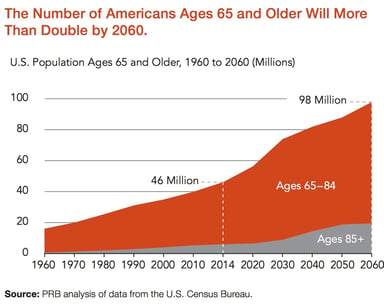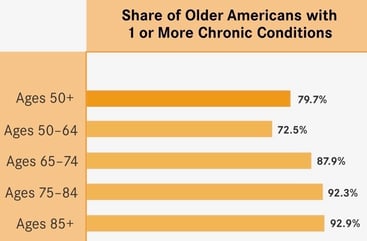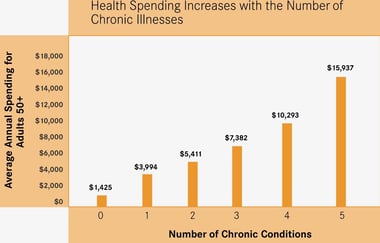 Right now today, doctors are too busy and patients are unable to schedule timely appointments. As a result, they are bypassing primary care, since a same day appointment is but a memory of the past, and joining the stampede to the local hospital emergency room. And now, emergency departments are inundated, crippled, and some are even crushed. The gatekeeper function of primary care is defunct and it’s ruining the healthcare system.
Right now today, doctors are too busy and patients are unable to schedule timely appointments. As a result, they are bypassing primary care, since a same day appointment is but a memory of the past, and joining the stampede to the local hospital emergency room. And now, emergency departments are inundated, crippled, and some are even crushed. The gatekeeper function of primary care is defunct and it’s ruining the healthcare system.
Unless immediate and comprehensive reforms are implemented by the government, primary care—the backbone of the U.S. health care system—will collapse and the repercussions will be devastating.
In an uncertain health care environment, industry experts are sure about one forecast: Over the next 50 years the expected growth of the older adult population in the U.S. will have an unprecedented impact on the health care system, especially in terms of the supply of and demand for primary care physicians.
Today in the U.S. there are 48 million people 65 and older. By 2025, there will be 71 million people age 65 and older. By 2050, the number of Americans aged 65 and older is projected to be 90 million, almost double what it is today. 
More than 75% of older Americans have more than 1 chronic condition. If this percentage remains stagnant, than by 2025, there will be 47 million older Americans with more than 1 chronic condition.
 The 65 and older cohort represents 17% of the population but utilizes the healthcare system at a proportionately much higher rate. As evidenced below, health spending increases with the number of chronic illnesses.
The 65 and older cohort represents 17% of the population but utilizes the healthcare system at a proportionately much higher rate. As evidenced below, health spending increases with the number of chronic illnesses.

With chronic conditions on the rise in this population, health care becomes more complex. A recent study found that 21.7 hours is the amount of time per day it would take a primary care physician working in a traditional model of care delivery to provide an average panel of patients with the acute, chronic and preventive care they need.
Managing these chronic conditions, along with a patient’s level of disability, will increase the financial demands on our health care system.
The number of people who qualify for Medicare increases as the population ages. More and more people will expect to be taken care of and this puts tremendous stress on the healthcare system, especially emergency departments.
Emergency departments are the only place in the U.S. health care system where individuals have access to a full range of services at any time regardless of their ability to pay or the severity of their condition. Today, the emergency department is becoming a primary resource for more and more people as the U.S. primary care system finds itself unable to meet the growing demand for care.
It means that Americans 65 and older who are newly on the medicare plan will have difficulty finding a regular source of care and difficulty finding someone who accepts their insurance.
It means primary care physicians will be forced to work harder and longer.
It means limited availability of timely care for urgent problems, delayed or foregone care for chronic problems, or an increase in emergency room visits for non-emergent problems. And, this is where it gets expensive. When older Americans go to the E.R. for their non-emergency problems or when sick people go to the E.R. for non-emergent problems, healthcare costs skyrocket. The overuse of U.S. emergency departments (EDs) is responsible for $38 billion in wasteful spending each year. Where does this money come from? The taxpayers.
Experts estimate that the cost of an emergency department visit for a non-urgent condition is two-times to five-times greater than the cost of receiving care in a primary care setting for the same condition. Treatment for an acute upper respiratory infection in the emergency department costs more than double that at a primary care office, $221 versus $106.
It means that even those who are currently insured will experience significant inconveniences and hassles. Everyone will encounter longer wait times, difficulty scheduling appointments, and less face-time with the doctor.
Conclusion
Providing coverage to a few million previously uninsured patients will no doubt increase the demand for primary care services. In the long run the ability to meet increased demands for primary care from an older, more universally insured population will depend less on head counts of providers and more on new, more efficient ways of delivering that care. Planning for that future now--and embracing the most promising strategies that fully utilize non-physician professionals in new systems of care--can avoid primary care shortages even in the long run.
Luckily, there is a solution to the primary care crisis. The solution lies within direct primary care, which offers same-day appointment scheduling, longer appointments and increased access to care overall. For the cost of a monthly gym membership, you can help save primary care in the U.S. And, you'll save significant money in the longrun.

